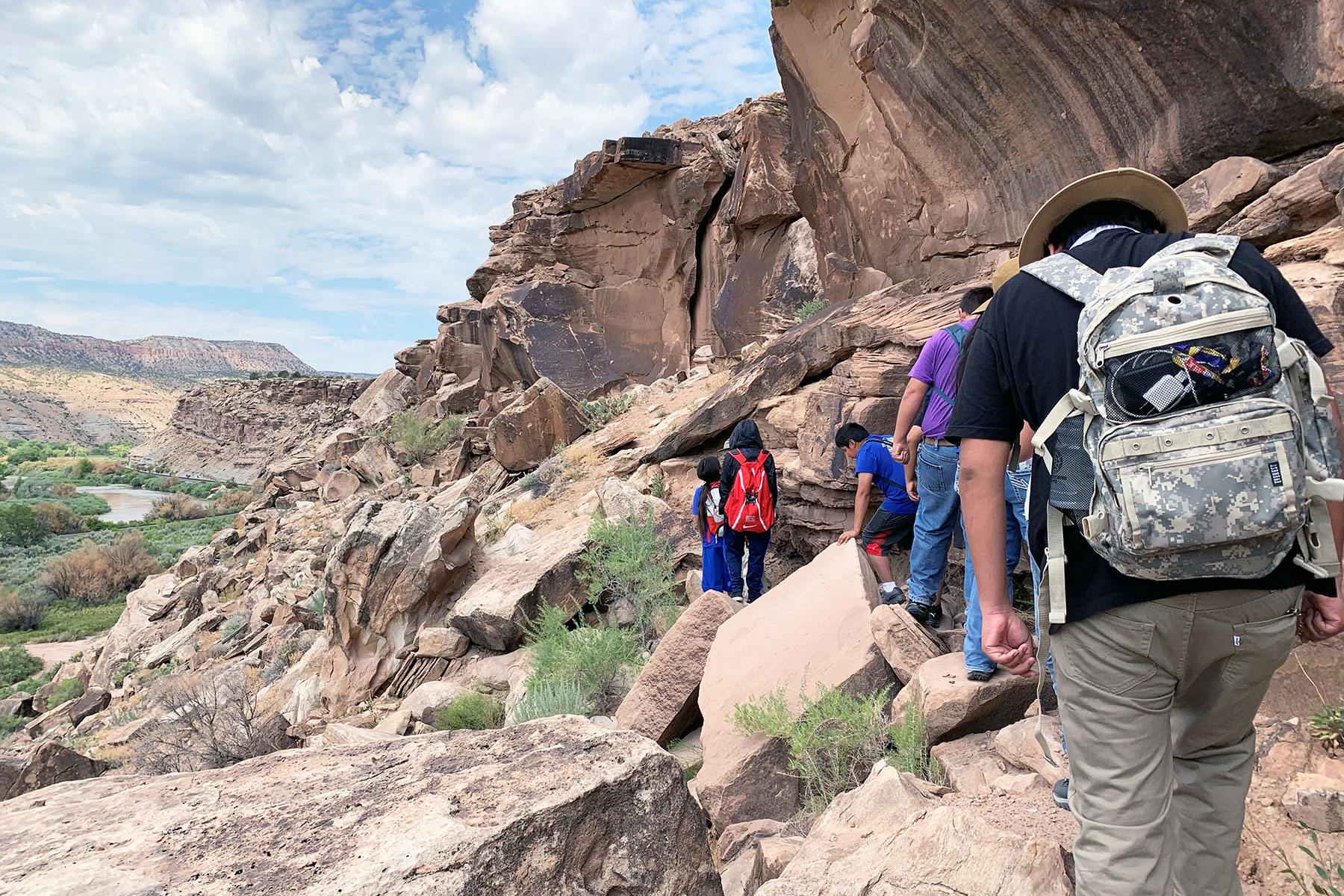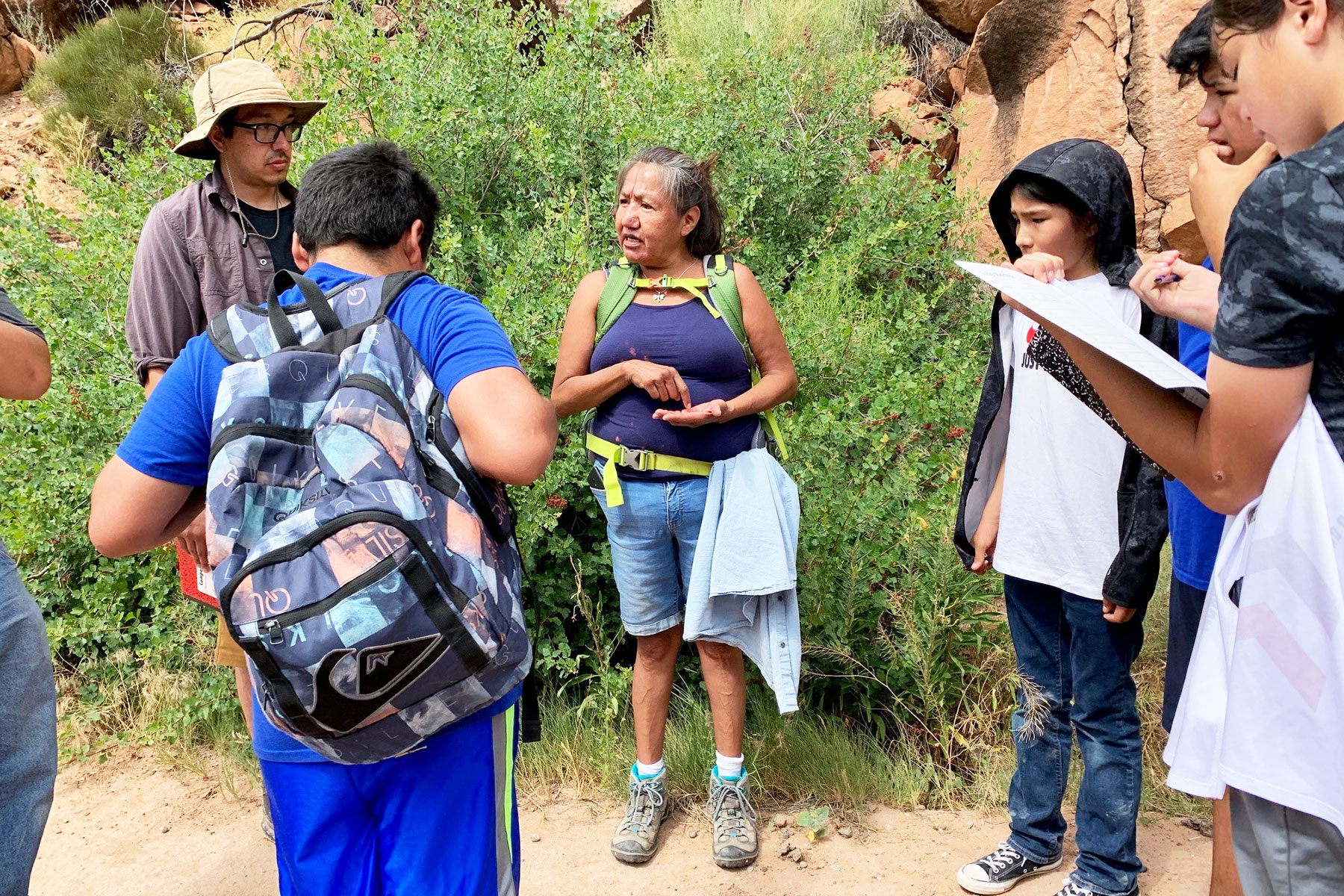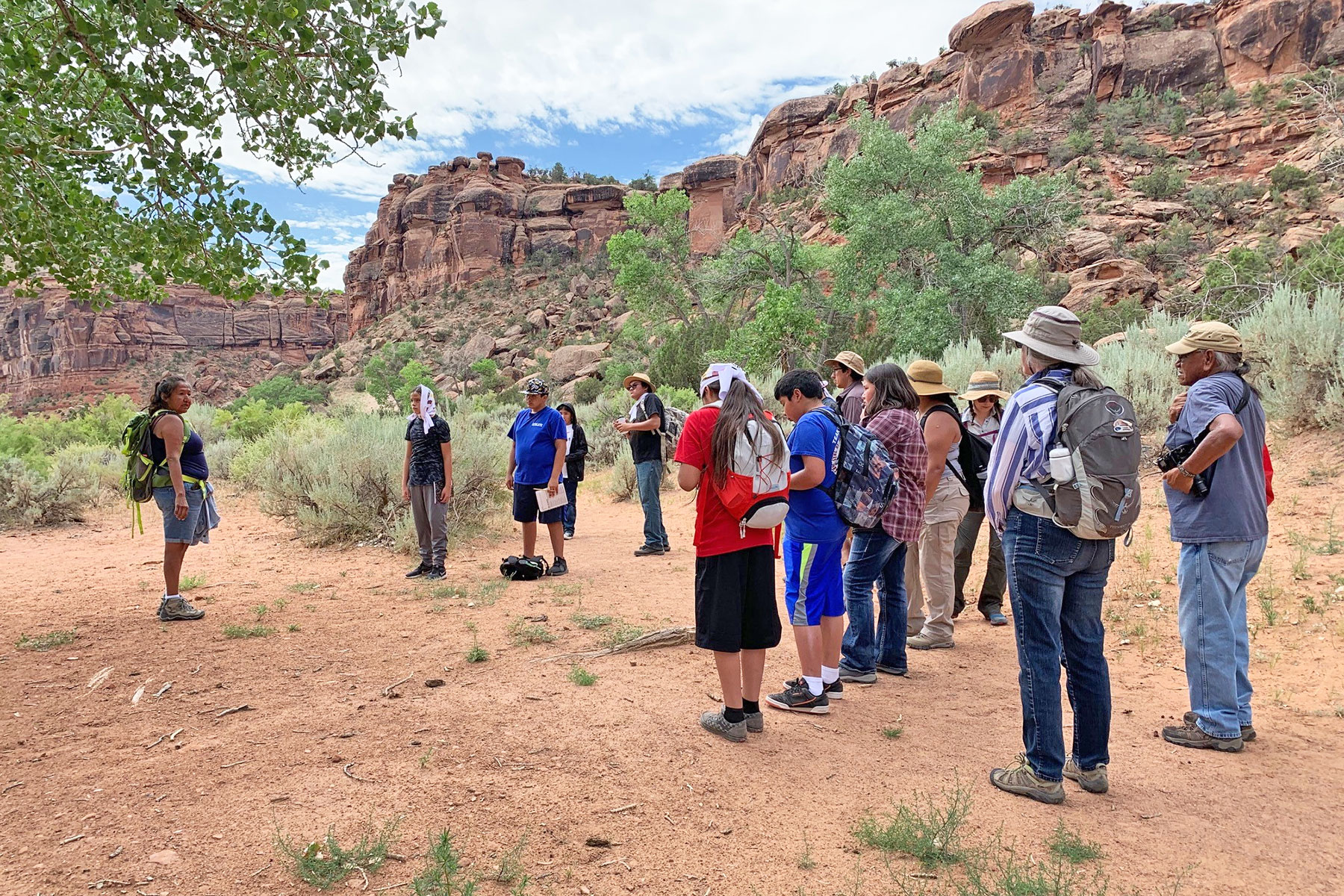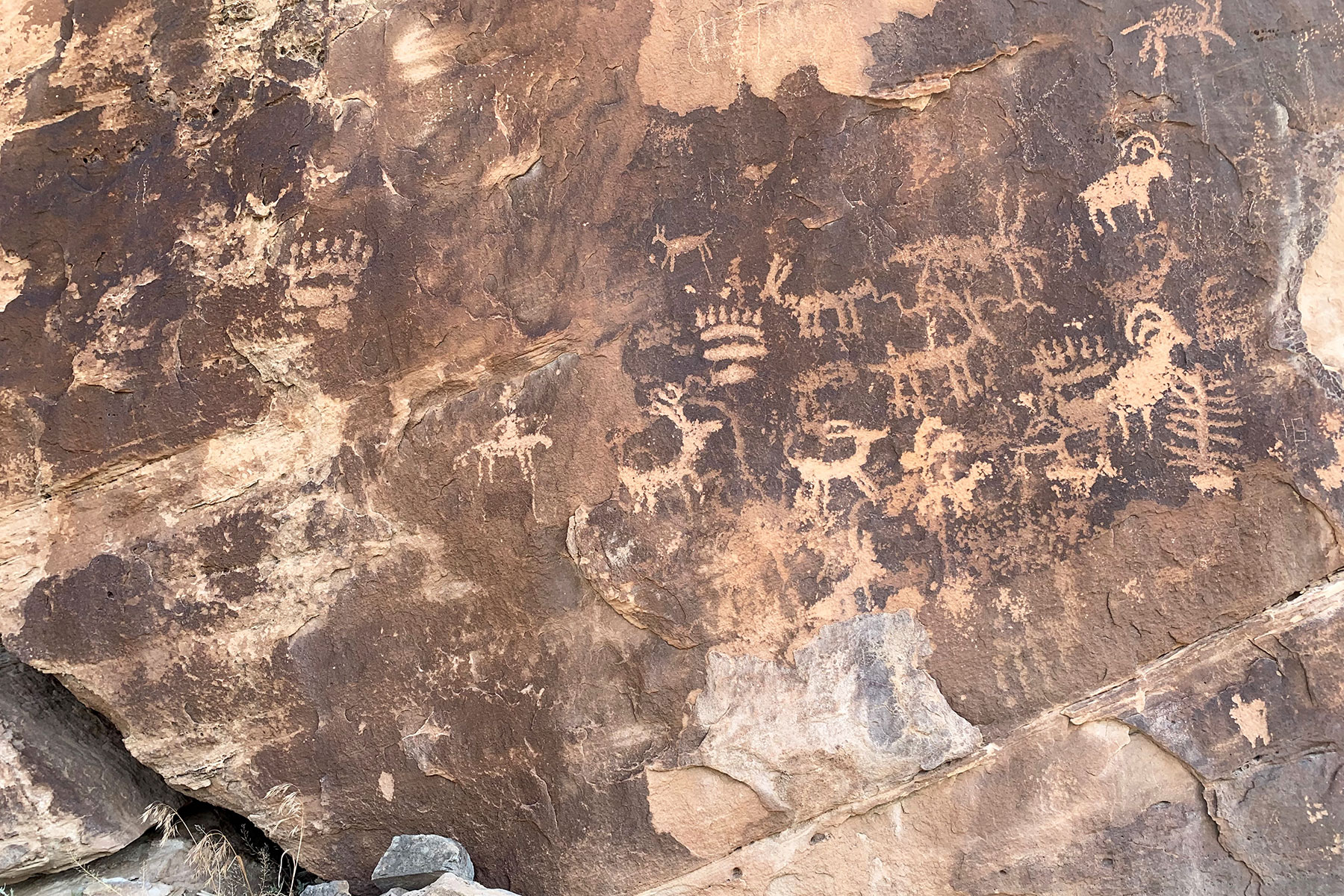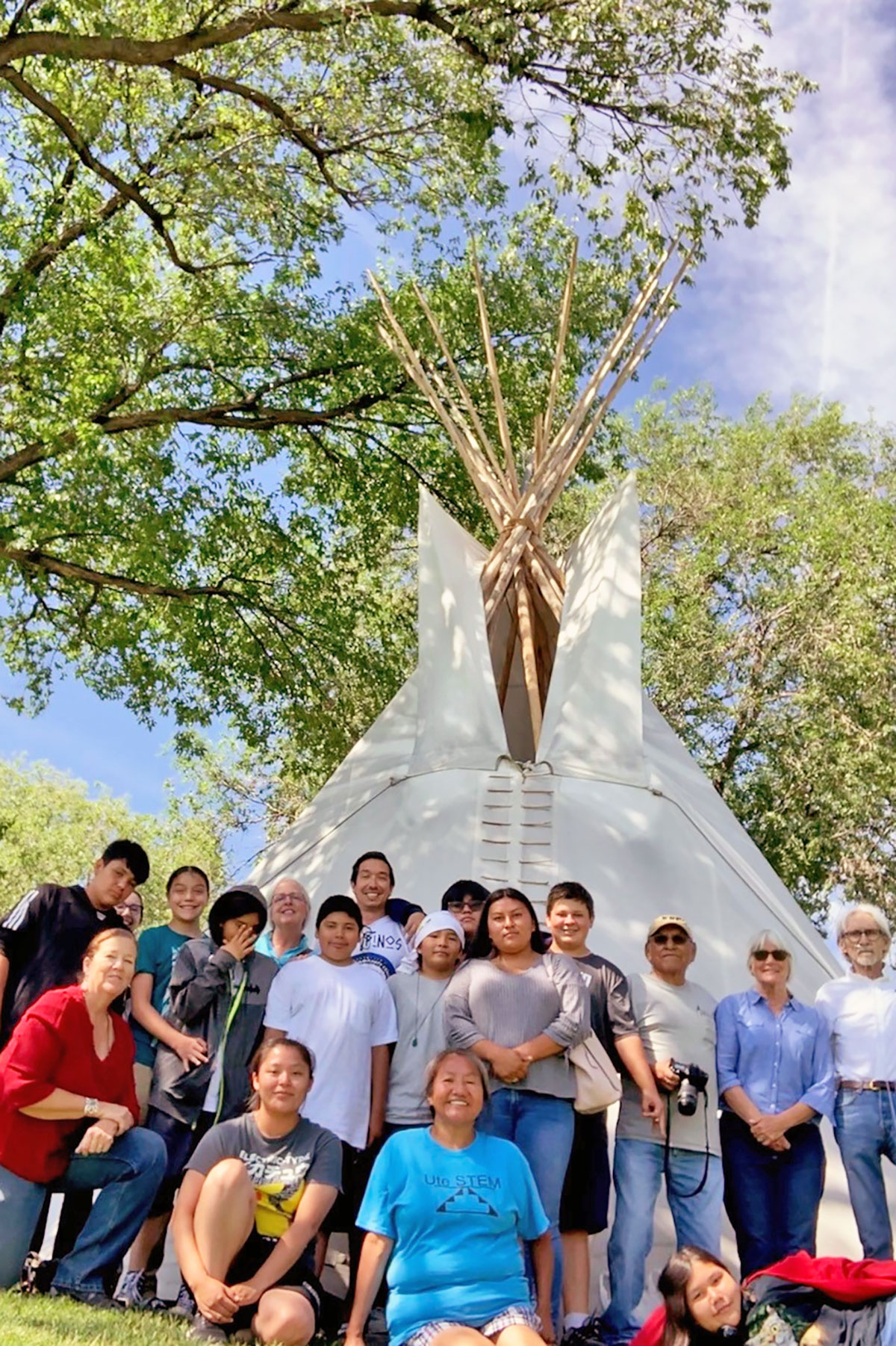This summer, tribal youth traveled with the Southern Ute Education Department to ancestral Ute rock art sites around Montrose, Colo. Students had the opportunity to interact with tribal elders, professional archeologists, and cultural specialists in the field.
Participants explored pictographs and petroglyphs spanning from Dominguez-Escalante National Conservation Area to Sego Canyon in Utah. The Bureau of Land Management (BLM) office in Grand Junction, Colo., provided information to the visiting students on landscape and the role BLM plays in preserving public lands.
Discussions and debriefing took place at the Ute Indian Museum after the students finalized their investigations.
Following their field work, students could identify Ute rock art patterns, produce their own interpretations, as well as present on their cultural connections. We would like to thank Tim Watts, Dominguez Archaeology Research Group, Ute Indian Museum, as well as Cassandra Atencio, and Garrett Briggs of the Southern Ute NAGPRA team for their collaborative efforts in making this trip possible.
“It is critical that we [the representatives from the NAGPRA Office] not only strive to protect our ancestral sites, but share those sites with our community. The introduction of our ancestor’s footprints to our youth, via the collaborative efforts with DARG and the Education Department, enable the Ute youth to learn about their forebears and in turn themselves,” said Garrett Briggs, Cultural Preservation NAGPRA Coordinator Apprentice. “These trips provide an opportunity for our youth to see beyond the well-defined boundaries of the reservation and visualize our people’s history firsthand.”

